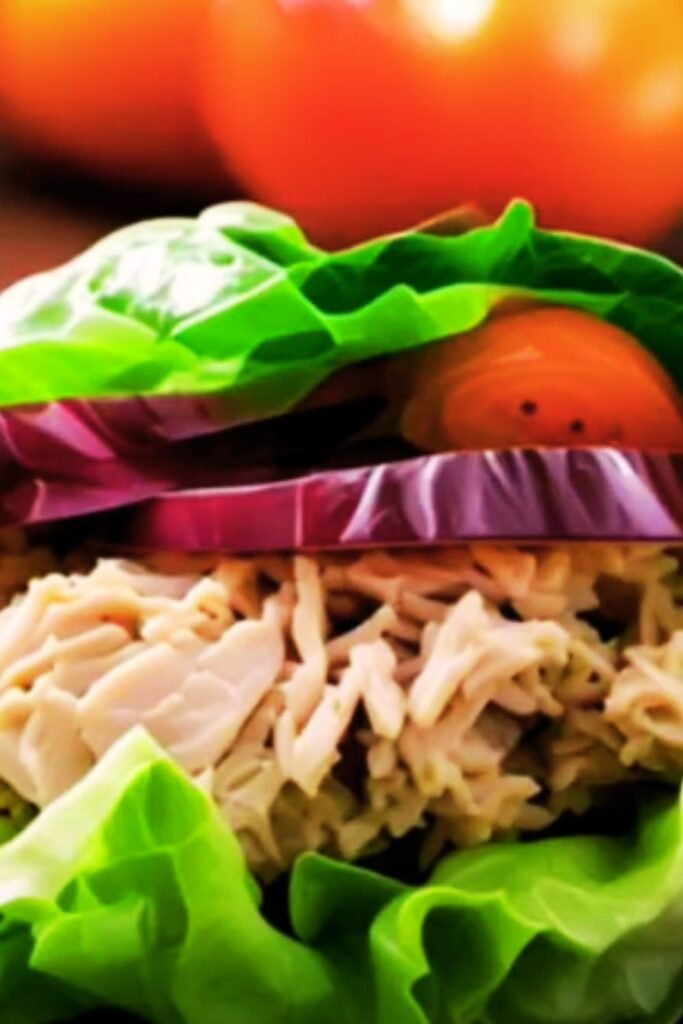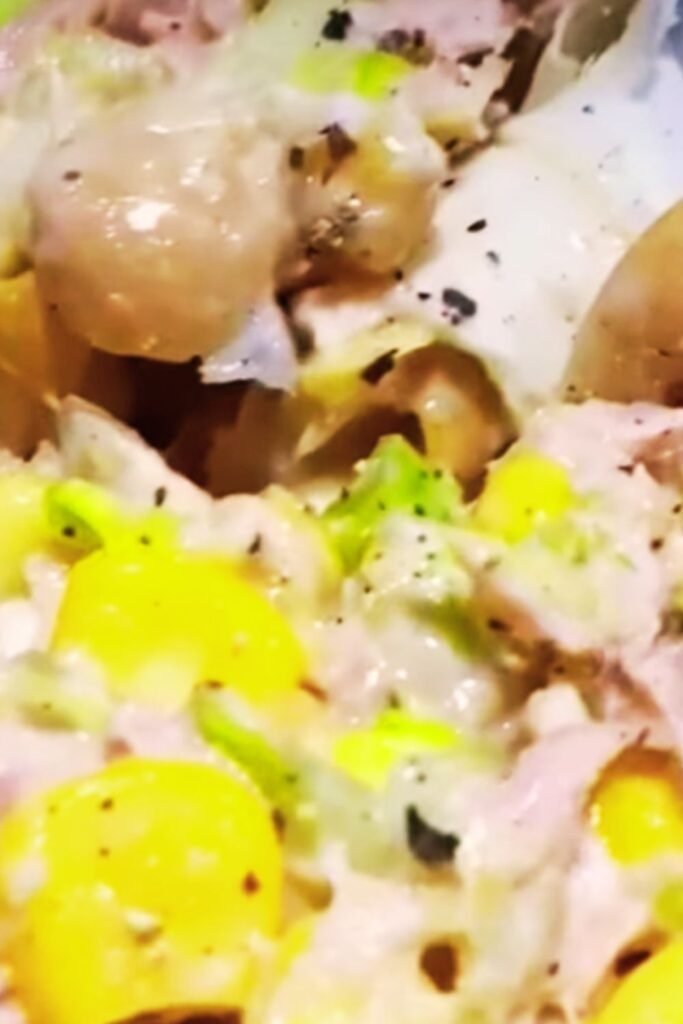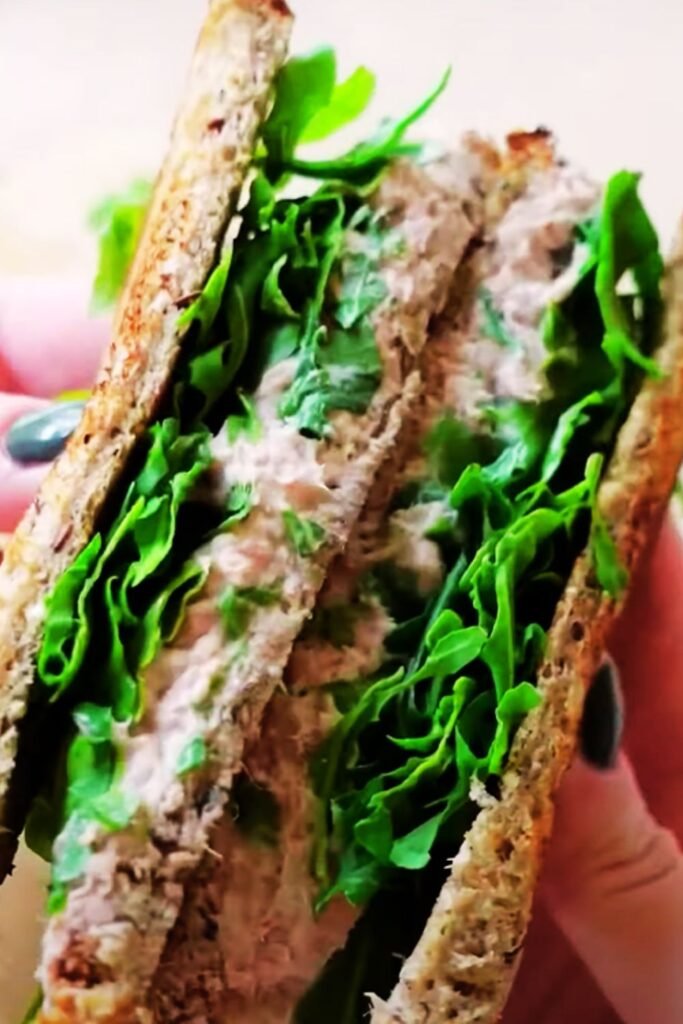I’ve been making tuna salad wraps for over a decade, and they remain one of my go-to meals when I need something quick, nutritious, and absolutely delicious. There’s something magical about the combination of flaky tuna, crisp vegetables, and creamy dressing all wrapped up in a soft tortilla. Whether you’re packing lunch for work, feeding hungry kids, or looking for a light dinner option, tuna salad wraps deliver on all fronts.
What makes tuna salad wraps so appealing is their incredible versatility. I can customize them based on what’s in my refrigerator, dietary preferences, or flavor cravings. From classic mayo-based versions to Mediterranean-inspired combinations with olive oil and herbs, the possibilities are endless. Plus, they’re budget-friendly and can be prepared in under 15 minutes.
Understanding the Foundation of Great Tuna Salad
Before diving into wrap variations, let me share what I’ve learned about creating the perfect tuna salad base. The quality of your tuna makes a significant difference in the final result.
Tuna Types and Selection : Water-packed tuna offers a cleaner taste and fewer calories, making it ideal for health-conscious preparations : Oil-packed tuna provides richer flavor and moisture, perfect for more indulgent versions : Albacore tuna delivers a meatier texture and milder taste compared to chunk light tuna : Fresh tuna, when available and properly cooked, creates an elevated gourmet experience
Essential Binding Ingredients : Mayonnaise serves as the traditional creamy base, providing richness and helping ingredients stick together : Greek yogurt offers a protein boost and tangy flavor while reducing calories : Avocado creates a naturally creamy texture with healthy fats : Olive oil combined with lemon juice provides a lighter, Mediterranean-style binding
My Go-To Classic Tuna Salad Wrap Recipe
After years of experimentation, this recipe has become my standard. It strikes the perfect balance between flavor, nutrition, and ease of preparation.
Ingredients for Classic Tuna Salad (Serves 4)
| Ingredient | Amount | Purpose | Substitution Options |
|---|---|---|---|
| Canned tuna in water | 2 cans (5 oz each) | Protein base | Fresh cooked tuna, salmon |
| Mayonnaise | 1/4 cup | Binding agent | Greek yogurt, avocado |
| Celery, diced | 2 stalks | Crunch texture | Bell peppers, water chestnuts |
| Red onion, minced | 2 tablespoons | Sharp flavor | Green onions, shallots |
| Lemon juice | 1 tablespoon | Acid balance | Lime juice, white vinegar |
| Salt | 1/2 teaspoon | Flavor enhancement | Sea salt, garlic salt |
| Black pepper | 1/4 teaspoon | Spice element | White pepper, paprika |
| Large flour tortillas | 4 pieces | Wrap base | Whole wheat, spinach tortillas |
| Lettuce leaves | 8-10 leaves | Fresh crunch | Spinach, arugula |
| Tomato, sliced | 1 medium | Juicy element | Cherry tomatoes, cucumber |

Step-by-Step Preparation Method
My preparation method ensures consistent results every time. I’ve refined this process to maximize flavor while minimizing prep time.
- Drain and prepare the tuna: Open both cans and drain thoroughly. I press the tuna gently with a fork to remove excess moisture, which prevents soggy wraps.
- Create the flavor base: In a medium mixing bowl, combine mayonnaise, lemon juice, salt, and pepper. Whisk until smooth and well-blended.
- Add aromatics: Incorporate minced red onion into the mayo mixture. Let this sit for 2-3 minutes to allow the onion flavor to mellow slightly.
- Combine tuna and dressing: Add the drained tuna to the bowl and mix gently with a fork, breaking up large chunks while maintaining some texture.
- Incorporate vegetables: Fold in diced celery, ensuring even distribution throughout the mixture.
- Season and adjust: Taste the mixture and adjust seasoning as needed. I often add a pinch more lemon juice for brightness.
- Rest the mixture: Allow the tuna salad to sit in the refrigerator for at least 15 minutes. This resting period lets flavors meld together beautifully.
Advanced Flavor Variations
Over the years, I’ve developed several signature variations that transform the basic tuna salad into exciting new experiences.
Mediterranean Tuna Salad Wrap
This version transports me straight to the Greek islands with its fresh, herb-forward profile.
Key Modifications:
- Replace mayonnaise with extra virgin olive oil and red wine vinegar
- Add diced cucumber, cherry tomatoes, and Kalamata olives
- Include fresh dill, oregano, and crumbled feta cheese
- Use whole wheat or spinach tortillas for added nutrition
Asian-Inspired Tuna Wrap
My Asian-fusion version brings together umami-rich ingredients for a completely different flavor experience.
Signature Elements:
- Sesame oil mixed with rice vinegar as the dressing base
- Shredded carrots, edamame, and thinly sliced radishes
- Fresh cilantro, mint, and a touch of sriracha
- Nori sheets layered inside the tortilla for extra ocean flavor
Spicy Southwest Tuna Wrap
When I’m craving heat and bold flavors, this southwestern variation never disappoints.
Heat-Building Components:
- Chipotle mayo made with adobo sauce
- Black beans, corn, and diced jalapeños
- Fresh avocado and lime juice
- Pepper jack cheese and cilantro

Nutritional Benefits and Health Considerations
Tuna salad wraps offer impressive nutritional value, making them an excellent choice for health-conscious meal planning.
Nutritional Breakdown per Classic Wrap
| Nutrient | Amount | % Daily Value | Health Benefits |
|---|---|---|---|
| Calories | 285 | 14% | Moderate calorie meal option |
| Protein | 22g | 44% | Muscle building and satiety |
| Healthy Fats | 12g | 18% | Heart health and nutrient absorption |
| Carbohydrates | 28g | 9% | Energy provision |
| Fiber | 3g | 12% | Digestive health |
| Omega-3 Fatty Acids | 0.3g | — | Brain and heart health |
| Vitamin D | 154 IU | 39% | Bone health and immune function |
| Selenium | 42mcg | 76% | Antioxidant properties |
Mercury Considerations
I always discuss mercury content when recommending tuna consumption. Light tuna typically contains less mercury than albacore, making it safer for frequent consumption. The FDA recommends limiting albacore tuna to 6 ounces per week for adults, while light tuna can be consumed more frequently.
Wrap Selection and Preparation Techniques
The tortilla you choose significantly impacts the final result. I’ve tested dozens of options and learned valuable lessons about selection and preparation.
Tortilla Types and Characteristics
| Tortilla Type | Flavor Profile | Texture | Best Used For | Shelf Life |
|---|---|---|---|---|
| Flour (Regular) | Mild, slightly sweet | Soft, pliable | Classic wraps | 7-10 days |
| Whole Wheat | Nutty, hearty | Dense, substantial | Health-conscious options | 5-7 days |
| Spinach | Mild vegetal | Soft with color | Visual appeal | 7-10 days |
| Tomato Basil | Herby, aromatic | Standard softness | Italian-inspired combinations | 7-10 days |
| Low-Carb | Variable | Often fragile | Keto-friendly versions | 3-5 days |
Tortilla Warming Techniques
I’ve found that warming tortillas makes them more pliable and enhances their flavor:
- Microwave method: Wrap in damp paper towel, heat for 15-20 seconds
- Skillet method: Heat dry skillet over medium heat, warm each side for 30 seconds
- Oven method: Wrap in foil, heat at 350°F for 5 minutes
- Gas flame method: Hold with tongs directly over flame for 10-15 seconds per side
Assembly Techniques for Perfect Wraps
After making hundreds of wraps, I’ve developed a foolproof assembly method that prevents soggy bottoms and ensures structural integrity.

The Layer-by-Layer Method
- Create a moisture barrier: Place lettuce leaves directly on the tortilla to prevent the tuna mixture from making the tortilla soggy.
- Position the protein: Spread tuna salad in a horizontal line across the lower third of the tortilla, leaving 2 inches on each side.
- Add complementary vegetables: Layer tomatoes, cucumber, or other vegetables on top of the tuna.
- Include flavor enhancers: Add cheese, avocado, or herbs as desired.
- Execute the fold: Fold the bottom edge over the filling, tuck in the sides, then roll tightly while maintaining even pressure.
- Secure if necessary: For transport, wrap in aluminum foil or parchment paper.
Storage and Meal Prep Strategies
Tuna salad wraps are excellent for meal preparation, but proper storage techniques are crucial for food safety and quality maintenance.
Make-Ahead Guidelines
Tuna Salad Storage:
- Prepared tuna salad keeps in the refrigerator for 3-4 days
- Store in airtight containers to prevent odor transfer
- Add delicate ingredients like avocado just before serving
Wrap Assembly Timeline:
- Assemble wraps no more than 4 hours before consumption
- Wrap individually in plastic wrap or parchment paper
- Keep refrigerated until serving time
Freezing Considerations
While I don’t recommend freezing complete wraps due to texture changes, the tuna salad base freezes reasonably well for up to one month. Thaw overnight in the refrigerator and refresh with additional seasonings before using.
Serving Suggestions and Accompaniments
The beauty of tuna salad wraps lies in their versatility as both standalone meals and components of larger spreads.
Perfect Pairings
Light Accompaniments:
- Fresh fruit salad with seasonal berries
- Baked sweet potato chips
- Pickle spears and olives
- Raw vegetable crudité with hummus
Heartier Sides:
- Homemade coleslaw with apple cider vinegar dressing
- Quinoa salad with roasted vegetables
- Soup options like tomato basil or butternut squash
- Mixed green salad with vinaigrette
Beverage Recommendations:
- Sparkling water with lemon or cucumber
- Iced herbal teas like mint or chamomile
- Fresh vegetable juices
- Kombucha for probiotic benefits
Troubleshooting Common Issues
Through years of making tuna salad wraps, I’ve encountered and solved numerous common problems.
Soggy Wrap Prevention
Problem: Tortilla becomes soggy and falls apart Solutions:
- Always drain tuna thoroughly before mixing
- Use lettuce as a moisture barrier
- Assemble wraps close to serving time
- Consider toasting tortillas lightly before filling
Flavor Enhancement Techniques
Problem: Bland or one-dimensional taste Solutions:
- Add acid through lemon juice, vinegar, or pickles
- Incorporate umami elements like capers or anchovies
- Use fresh herbs for brightness
- Season in layers during preparation
Texture Improvement Methods
Problem: Mushy or uninteresting texture Solutions:
- Don’t overmix the tuna salad
- Add crunchy elements like nuts or seeds
- Include firm vegetables like bell peppers
- Consider different tuna preparations
Creative Presentation Ideas
When entertaining or wanting to elevate the presentation, I use several techniques to make tuna salad wraps more visually appealing.
Pinwheel Preparation
Cut assembled wraps into 1-inch thick rounds to create colorful pinwheels. This technique works especially well for parties and showcases the beautiful layers inside.
Lettuce Wrap Alternative
For low-carb versions, I use large butter lettuce or iceberg lettuce leaves instead of tortillas. This creates an elegant, fresh presentation while reducing calories.
Deconstructed Bowl Style
Serve all wrap components in a bowl format, allowing diners to customize their own combinations. This approach works well for meal prep and dietary restrictions.
Frequently Asked Questions
Q: How long can I store prepared tuna salad in the refrigerator? Properly stored tuna salad will keep for 3-4 days in the refrigerator. Always use airtight containers and check for any off odors before consuming.
Q: Can I make tuna salad wraps without mayonnaise? Absolutely! Greek yogurt, mashed avocado, olive oil with lemon juice, or tahini all make excellent mayo alternatives. Each provides different flavors and nutritional benefits.
Q: What’s the best way to prevent wraps from getting soggy? The key is managing moisture. Drain tuna thoroughly, use lettuce as a barrier between wet ingredients and the tortilla, and assemble wraps close to serving time.
Q: Are tuna salad wraps suitable for meal prep? Yes, but with some considerations. Prepare the tuna salad up to 3 days ahead, but assemble wraps no more than 4 hours before eating for best quality.
Q: Can I freeze tuna salad wraps? I don’t recommend freezing complete wraps as the texture suffers significantly. However, you can freeze the tuna salad base for up to one month.
Q: What are some healthy substitutions I can make? Try whole wheat tortillas, Greek yogurt instead of mayo, add extra vegetables, use water-packed tuna, and include heart-healthy additions like avocado or nuts.
Q: How can I make my tuna salad wraps more flavorful? Layer your seasonings, add acid through lemon juice or vinegar, include fresh herbs, incorporate umami-rich ingredients like capers, and don’t forget to season with salt and pepper.
Q: What vegetables work best in tuna salad wraps? Celery provides classic crunch, tomatoes add juiciness, cucumber offers freshness, bell peppers contribute color and sweetness, and leafy greens provide nutrients and texture.
Q: Can I use fresh tuna instead of canned? Certainly! Cook fresh tuna to your preferred doneness, let it cool, then flake it into bite-sized pieces. Fresh tuna creates a more gourmet experience but requires more preparation time.
Q: How do I know if my canned tuna is still good? Check the expiration date, look for any bulging or dented cans, and once opened, ensure the tuna smells fresh and ocean-like, not fishy or off-putting.
Tuna salad wraps have earned their place in my regular meal rotation because they perfectly balance convenience, nutrition, and flavor. Whether you’re following my classic recipe or experimenting with creative variations, these wraps offer endless possibilities for delicious, satisfying meals. The combination of high-quality protein, fresh vegetables, and customizable flavors makes them ideal for any time of day, any season, and any dietary preference. With proper preparation techniques and quality ingredients, you’ll create wraps that rival any restaurant version while maintaining complete control over nutrition and flavor profiles.